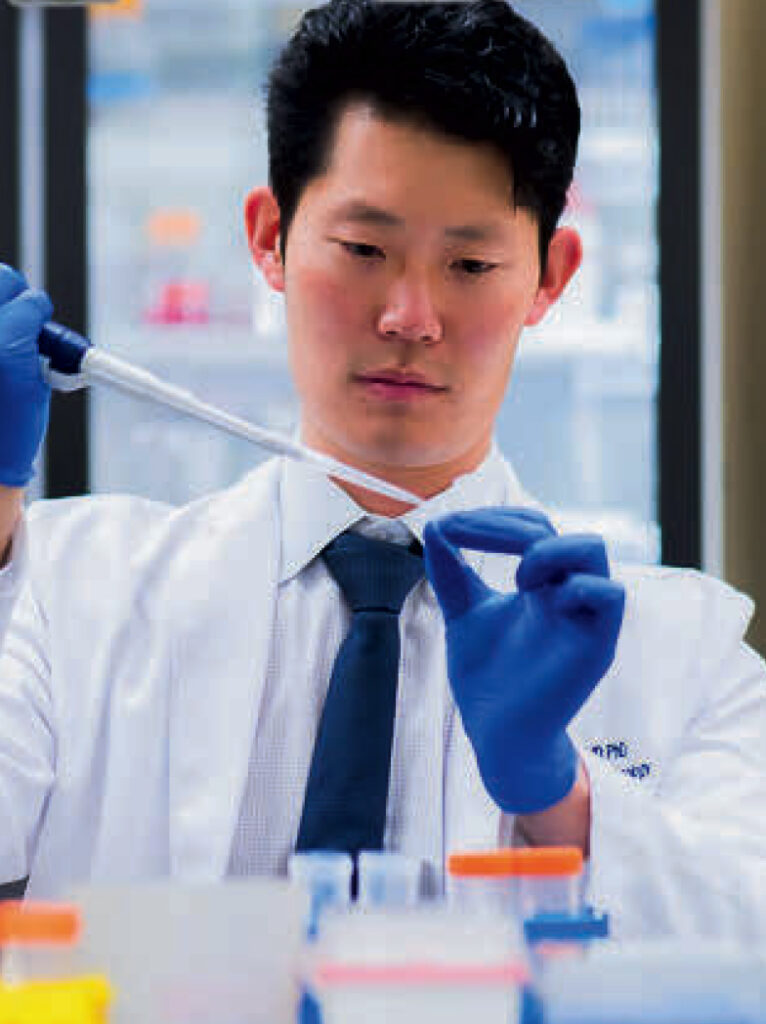At their April 2023 meeting, the Board of Directors of All May See approved $200,742 in research awards for the following projects:
 Development of an injectable biopolymer device for sustained intravitreal delivery of carbonic anhydrase inhibitor for the treatment of juvenile X-linked retinoschisis.
Development of an injectable biopolymer device for sustained intravitreal delivery of carbonic anhydrase inhibitor for the treatment of juvenile X-linked retinoschisis.
Principal Investigator: Robert Bhisitkul, MD, PhD
 Juvenile X-linked retinoschisis (XLRS) is an inherited retinal disorder (IRD) that predominantly affects boys and men, arising in early childhood with potential blindness by their teens or adulthood. While there are few medication options for IRDs, XLRS responds well to carbonic anhydrase inhibitor (CAI) treatment. Treatment with eye drops has been effective but is unable to fully penetrate the eye and dependent on patient application. This project aims to develop a minimally invasive injectable device to provide CAI therapy for 6–12 months, offering a better treatment approach.
Juvenile X-linked retinoschisis (XLRS) is an inherited retinal disorder (IRD) that predominantly affects boys and men, arising in early childhood with potential blindness by their teens or adulthood. While there are few medication options for IRDs, XLRS responds well to carbonic anhydrase inhibitor (CAI) treatment. Treatment with eye drops has been effective but is unable to fully penetrate the eye and dependent on patient application. This project aims to develop a minimally invasive injectable device to provide CAI therapy for 6–12 months, offering a better treatment approach.

Identification of a visually evoked reflex as a more sensitive diagnostic for graded cone loss.

Principal Investigators: Felice Dunn, PhD, and Jacque Duncan, MD
Many degenerative vision diseases are caused by the deterioration of photoreceptors (light-sensitive cells) in the back of the eye. However, this loss can evade detection until more than half of the cells are compromised. The Dunn and Duncan labs are collaborating to develop high-sensitivity assays to detect photoreceptor degeneration earlier than current methods. The Dunn lab’s discoveries revealed novel changes to visual processing following modest cell loss, and in combination with the clinical expertise of the Duncan lab in diagnosing such conditions, this project hopes to generate a new window into eye health, enabling the early identification, management, and mitigation of degenerative vision diseases.
 Deep learning system to predict 5-year risk of high myopia using fundus imaging in a North American population of children.
Deep learning system to predict 5-year risk of high myopia using fundus imaging in a North American population of children.

Principal Investigator: Jonathan Li, MD
This project involves photographing North American children’s retinas and processing the photos through an artificial intelligence system to predict a child’s risk of developing severe nearsightedness (high myopia). If found valid, this non-invasive approach will enable the identification of patients most in need of aggressive treatment while there is still ample time for intervention.
 Multiphoton Aqueous Flowmetry and Image-Guided Laser Therapy: Novel Approaches for Glaucoma Precision Medicine.
Multiphoton Aqueous Flowmetry and Image-Guided Laser Therapy: Novel Approaches for Glaucoma Precision Medicine.

Principal Investigator: Tyson Kim, MD, PhD
Currently, the only treatment to slow or stop progression of glaucoma is to lower eye pressure. This project investigates the use of advanced laser imaging techniques for new, less-invasive methods to measure the drainage of fluid (aqueous humor) from the eye, which will ultimately result in more precise methods of glaucoma evaluation and treatment.
